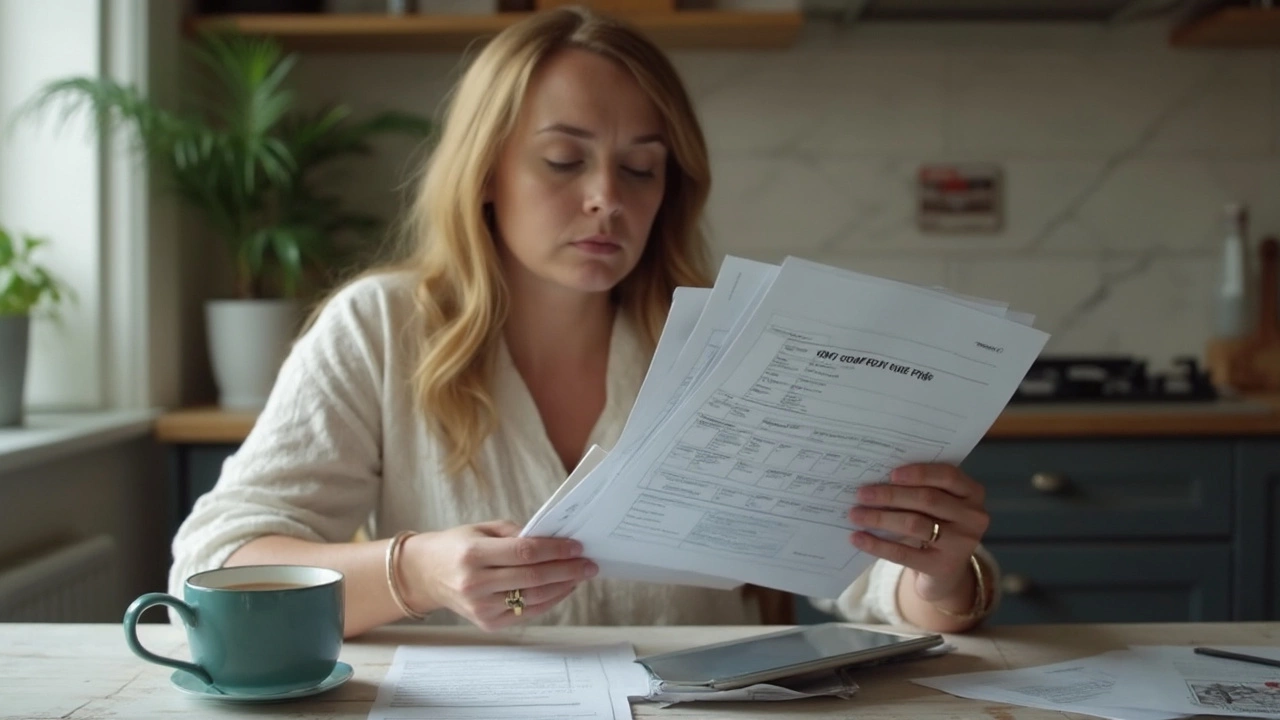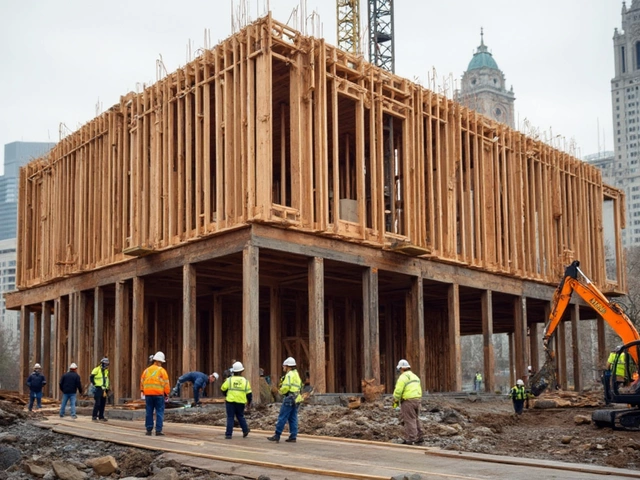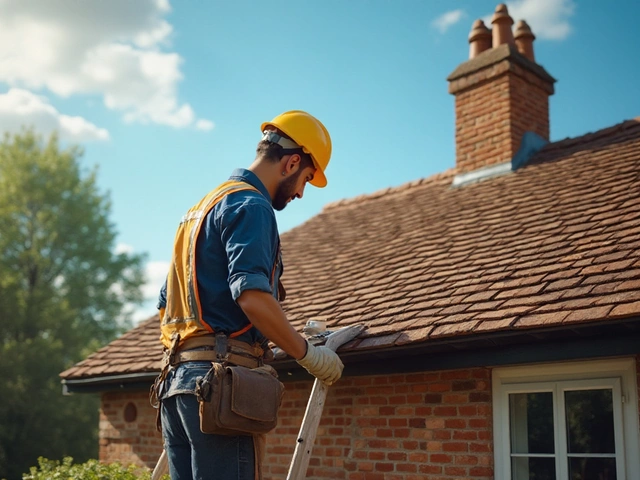If you've ever looked up how much roofers make per hour, you know the answers are all over the place. Some companies charge a flat hourly rate, while others roll in extra fees for things like travel or safety setup. Here’s the deal: in most cities, you’ll see hourly rates starting from $50 and running well over $100, depending on the job and crew.
The type of work really matters. Fixing a couple of shingles costs way less per hour than tearing off an old roof and putting on something new. Most roofing companies also bring a crew instead of a single guy, which can bump up rates fast since you’re basically paying per person, per hour. Don’t get shocked when you see a quote that seems a little high—labor is almost always the biggest chunk of your roofing bill.
- How Hourly Rates Work
- What Affects Roofing Costs
- Average Hourly Charges in 2025
- Smart Tips to Avoid Overpaying
How Hourly Rates Work
When you’re talking about roofing companies, hourly rates sound simple but there’s actually a bit going on under the hood. It’s not just a flat fee for time — it’s about covering labor, overhead, insurance, and sometimes even the cost of using special equipment. On top of that, if there’s a crew, you’re usually charged for every person working on your roof, not just the lead roofer.
Here’s a quick breakdown of what gets wrapped into that hourly number:
- Roofing companies typically include worker wages, liability insurance, general business costs, and sometimes transportation.
- Special licensing or certifications can bump up the hourly rate, especially for jobs that need extra safety measures or expert skills.
- Some companies have a two-hour (or more) minimum just to show up, even if the job takes less time.
- Rates can also flex up if you’re in a city with a higher cost of living, or during busy seasons when everyone needs repairs at once.
When comparing companies, keep in mind not all of them quote by the hour. Some prefer to quote by the job, but still figure things out using those hourly costs behind the scenes.
| Component | Estimated Share of Rate |
|---|---|
| Labor | 55-70% |
| Insurance | 10-20% |
| Overhead (office, vehicles, etc.) | 10-15% |
| Profit | 5-10% |
It’s always smart to ask for a clear breakdown before hiring anyone. If a company dodges those questions or gives a fishy answer, that’s a sign to keep looking. Understanding what you’re actually paying for can save you from nasty surprises later on.
What Affects Roofing Costs
There’s no one-size-fits-all price when it comes to roof work. Several things mess with the final bill, and knowing how this stuff works makes a real difference. The most obvious factor is the size and pitch of your roof. A steep or complicated roof means slower progress, extra safety gear, and more hours clocked in. That shoots the hourly cost up.
Material type also makes a big difference. Asphalt shingles are the cheapest, both for materials and labor. Metal, slate, or tile? Expect the rate to jump. Some companies charge more per hour if you want designer shingles or unique roofing materials. It’s mostly about extra training and more careful installation, not just fancy looks.
Another biggie: your location. City rates are almost always higher than in small towns. Roofing in New York, Chicago, or Los Angeles adds travel, parking, and even higher insurance for the team. Even local rules push rates up—if your city demands special permits or more safety stuff, you’ll feel it in your bill.
Weather can also wreck the schedule and eat up labor hours fast. Roofers move slower when there’s rain, snow, or even blazing heat. If your job gets pushed into the off-season or a storm hits, you’re paying for delays and sometimes even emergency fees.
Don’t forget about crew size and experience. A seasoned company with well-trained workers can knock the job out faster, but their roofing companies hourly rate is usually higher. Sometimes you pay more per hour but less overall, because the crew actually gets it done right and fast. Watch out for super low bids—these can lead to surprise “extras” once the job starts, especially if the company runs into hidden issues like rotted wood or old nails.
- Roof size and design: More surface or tricky angles boosts hourly charges.
- Material selection: Fancy or heavy materials take longer and cost more.
- Location: Urban jobs are pricier due to logistics and local codes.
- Weather: Bad timing means more labor hours and possible premium fees.
- Crew expertise: Skilled roofers move faster but cost more per hour.
If you care about holding costs down, ask roofers straight up how each of these things factors into their hourly rate before you sign anything. No two jobs are exactly alike, so clear questions save headaches later.

Average Hourly Charges in 2025
So how much are roofing companies actually charging per hour right now? Across the U.S. in 2025, you’ll find a pretty big range. On the low end, small local outfits or one-man bands might charge around $55 to $65 an hour. Bigger companies, especially in cities or places with a lot of demand, usually ask for $85 to $130 per hour. Some premium service providers in tech-heavy or high cost-of-living places (think San Francisco or NYC) have even ticked north of $150 an hour for skilled roofers.
Here’s what drives these numbers. Material prices haven’t dropped since the pandemic—shingles, underlayment, and safety gear all cost 10-15% more than last year, and labor costs aren’t exactly going down either. Plus, companies factor in travel, insurance, and licensing fees, which get baked into the roofing companies hourly rates you see on a quote.
To give you the lay of the land, check out this basic breakdown of average hourly charges (2025 estimates):
| Type of Roofer | Hourly Rate (USD) | Region/Notes |
|---|---|---|
| Small local company | $55–$80 | Usually 1-2 people; less travel cost |
| Established roofing firm | $90–$120 | Standard in suburbs and medium cities |
| Specialty or big city pros | $130–$155 | Complex jobs; high-demand urban areas |
Here’s something a lot of folks miss: the hourly number isn’t the only thing that makes your bill go up. Most companies have a minimum charge—if your minor repair only takes 45 minutes, you’ll probably still pay for a full hour. Some charge extra for things like steep roofs, tough access, or hauling away old material.
Always ask what’s included in the hourly rate. Does it cover the whole crew? Does it change if materials are needed? The more questions you ask upfront, the less likely you are to be stuck with surprises after the job is done.
Smart Tips to Avoid Overpaying
Getting a fair deal on roofing work isn’t just luck—it’s about asking the right questions and knowing what to look for. First, always get at least three quotes before you commit. Roofing companies usually price jobs differently, so a little shopping around can easily save you hundreds of dollars.
Ask for a breakdown of costs. If a contractor shrugs off your questions or is vague about charges, that’s a red flag. A legit roofer should clearly list labor, materials, and extra fees. Here’s a simple price table so you know what’s typical heading into negotiations:
| Service | Hourly Rate (2025 Avg.) |
|---|---|
| Roof repair (small crew) | $65 – $90 |
| Full reroof (large crew) | $75 – $120 |
| Emergency repair surcharge | +25% standard rate |
Here’s how to keep more cash in your pocket:
- Schedule work during off-peak months like late fall or winter. You’ll often get better rates when roofers aren’t slammed with jobs.
- DIY prep can help. If you’re able to clear debris or move obstacles around the house before the crew arrives, it can shave time off the job—and your bill.
- Don’t skip the warranty. Some homeowners get lured by the lowest upfront price, but that can backfire if there’s no warranty backing the work.
- Scrutinize fine print in your contract. Watch for travel or disposal fees hiding at the bottom. If something looks fishy, ask for it to be clarified or removed.
If you want a ballpark, the roofing companies often charge less per hour for straightforward shingle swaps than for complex work like fixing flashing or valleys. Prices also rise fast in cities with a higher cost of living, so be sure to compare with local averages, not random numbers you find online from other states.





